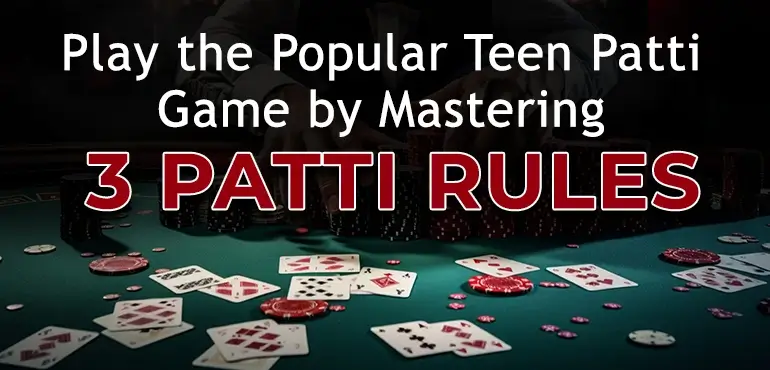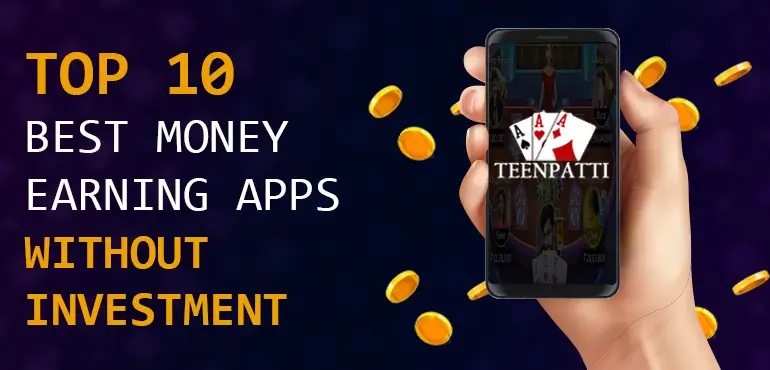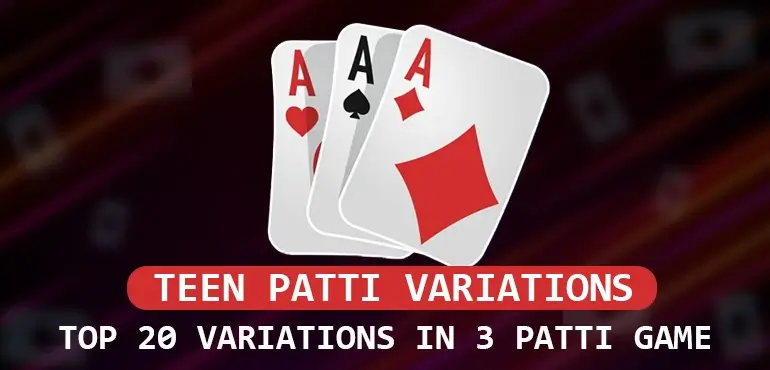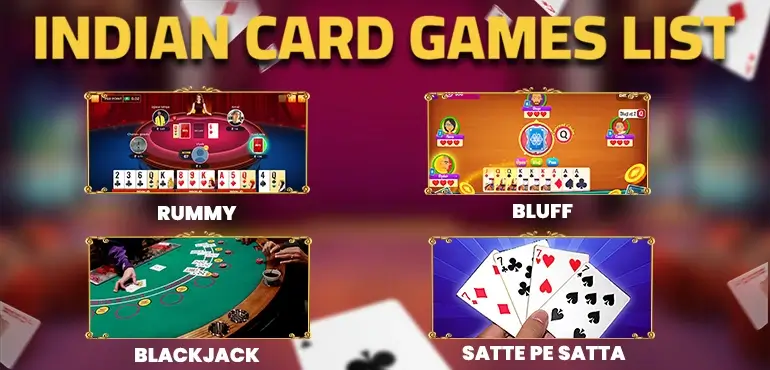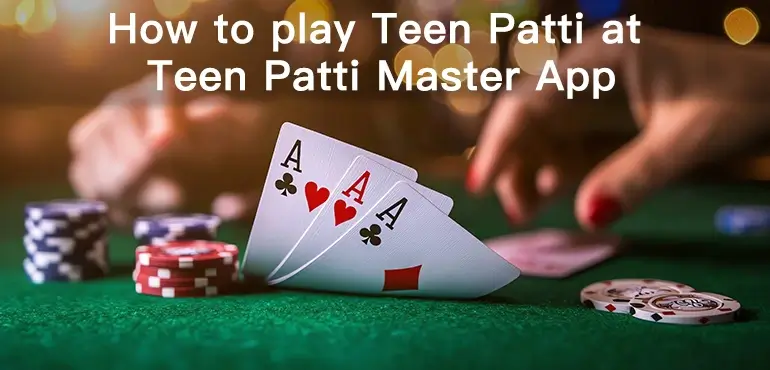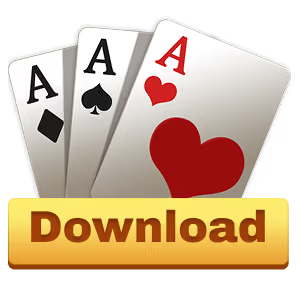
3 Patti Sequence List & Hand Rankings
Teen Patti has a special place in the hearts of people who indulge in traditional card games. It’s one of the most popular games in South Asian countries. The exact Teen Patti rules often have slight differences from one region to another, but broadly speaking, the main objective and format remain the same.
You can say it’s a twisted variation of a globally popular and exciting poker game. In India, 3 patti is usually played during festival seasons to bond with friends and family members. Playing card games like 3 Patti during Diwali, Holi, and other as such festivities is considered an auspicious activity.
It’s associated with bringing luck and a sense of togetherness. These days, you’ll find people playing it everywhere – from family gatherings to fancy casinos, and even on their smartphones. It’s like the game has gotten a modern makeover without losing its traditional charm.
But how do you play it efficiently? To help you get started we’ll explore 3 Patti sequences, hand rankings, techniques to improve your game, and everything else you need to master this game. Also, you can download the Teen Patti app on your mobile and win real cash awards just by spending a few minutes on your device every day.
Basic Setup - Teen Patti Rules
Before you clutter your head with fancy jargon, let’s get the basics sorted. The best way to enjoy Teen Patti Game on the Teen Patti app or in person is to play in a group of 3-6 players. To get started you just need a basic 52-card deck.
First, all the players cough up some money as a betting amount and put it in the center of the table, it’s known as the boot amount. After that dealer gives three face-down cards to each player. Now players have two choices at this point. Either they can play “blind”, i.e. without looking at cards dealt to them or they can play as “seen”, i.e. allowed to look at cards given to them.
But why would anyone play blind? Well, this way you get to bet less amount than seen players because of the extra risk involved. As for the dealing part, it’s quite simple. Cards go clockwise, one at a time until everyone has three cards. Think of it like dealing in poker, just with fewer cards per person. Well, now that the basic premise is clear, let’s move on to 3 Patti sequences and 3 Patti hand rankings.
What is the 3 Patti Sequence?
In 3 Patti, the sequence is a set of pre-defined card combinations. The specific combination or sequence you get can have a direct impact on how strong your hand is in the game. As per card game hierarchy, cards from the same suit will rank higher than cards from different suits.
So by this definition, the highest possible sequence is A-K-Q of any suit, and the lowest sequence is 2-3-4. 3 patti sequence rules bring an additional layer of fun and thrill to the game, and as a result, it’s deemed as more engaging in most of the popular classic card games. With a little bit of luck, skills, and face-reading techniques you can emerge as a teen patti winner in online tournaments.
3 Patti Sequence & Hand Rankings
Now that we have covered the basics, let’s take a deep dive and understand this in detail. The following chart can give you a good idea :
| 3 Patti Sequence | Highest Possible Sequence | Lowest Possible Sequence | Probability of happening |
|---|---|---|---|
| Trail/Three of a kind/Trio | A-A-A | 2-2-2 | 0.24% |
| Pure Sequence or Straight Flush | A-K-Q | 4-3-2 | 0.97% |
| Straight Or Sequence | A-K-Q | 4-3-2 | 3.26% |
| Color | A-K-J | 5-3-2 | 4.96% |
| Pair | A-A | 2-2 | 16.94% |
| High Card | A | 2 | 74.39% |
Let’s Understand 3 Patti Sequence List in detail one by one :
Getting a grip on each teen patti sequence is crucial to making quick decisions that can directly impact the overall outcome of the game.
Trail/Trio/Three of a Kind
This is the highest hand or sequence you can get in the game. Trail simply means three cards that have the same rank. For example, three Ace cards, three king cards, or even three 8s or 9s. What matters is the rank of the card, higher ranks will lead to a better trail. So AAA beats KKK, which beats QQQ, and so on. So if you somehow get thee aces, it’s practically impossible to beat you. However, the probability of that happening is quite low ( 0.24 %). It’s like finding three matching socks in your drawer (which is honestly harder than getting a Trail in poker sometimes.
Pure Sequence/Straight Flush
The second best sequence you can get is Straight Flush. It means three consecutive cards from the same suit. For example, 4♠5♠6♠ or J♥Q♥K♥ . It’s like running into your three best friends who are all wearing matching outfits. Another good example is 7♠, 8♠, 9♠ of Spades. This hand is hella rare though and considers quite some power. That’s why it beats everything other than Trail. The higher your sequence starts, the stronger it is. You do have a 0.97% chance of getting this. Also, when we compare straight flush, higher cards will win, so K♠Q♠J♠ beats 9♥8♥7♥.
Sequence/Straight
You can say this is the unidentical twin of the pure sequence that we discussed above. Here, everything else is the same but cards can be from different suits. It’s like your friends wearing different colored outfits but still walking in height order. Example: 4♠, 5♣, 6♥ - different suits but they’re all holding hands in order! This hand ranks below Pure Sequence but above Color. Pro tip: Ace can play nice at both ends, so A-2-3 and Q-K-A are both valid sequences. If you’ve got two sequences, like 8-9-10 and 9-10-J, always play the higher one. Probability-wise, you’re looking at about a 3.26% chance of making a sequence.
Color/Flush
The color sequence is like capturing a rainbow in your hands. In this teen patti sequence, three cards are from the same suit, but they are not in sequence. For example, wearing all yellow on a haldi event. When you compare colors, make sure to check the highest card first. The second card, and then finally the third one of necessary. A K♥J♥4♥ beats a K♠10♠3♠ because the second card (J) is higher than 10. Colors show up about 4.96% of the time – not super rare, but playable. Another simple example of color is 3♥, 7♥, J♥. This hand defeats a Pair but loses to any kind of sequence.
Pair
The same twin analogy can be applied here, but in this case, we have identical twins and one non-identical sibling. In simple words, it’s called a pair when you have two cards of the same rank plus a random third wheel. For example, if you have 8♠, 8♣, and 5♥, you’ve got a Pair of 8s. When comparing Pairs, the higher pair wins - and if the pairs are equal, the higher third card (called the ‘kicker’) decides the winner. It’s better than having nothing, but most other hands will beat it. Pairs are pretty common and may show up in about 16.94% of hands.
High Card
This is like the last resort, when you don’t have anything concrete, your hand is ranked by the highest card, then the second highest, then the lowest. When you’ve got nothing else going on - no pairs, no sequence, no color - you’re in High Card territory. It’s like showing up to a costume party in your regular clothes! Your best card is your champion here. For example, with K♠, 7♣, 2♥, your King is your hero. When comparing High Cards, you start with the highest card and work down. Most of your hands (about 73.57%) will be high card hands, so learning to play them right is quite important.
Some Advances Teen Patti Strategies
Now that we’ve covered all 3 Patti sequences, rules, and basic premise, let’s take a look at some advanced strategies to increase your chances of winning.
Importance of playing blind/seen:
When you play blind you get to bet less amount than other players - sounds worth it right? Well, your risk level also shoots up. But the higher the risk, the better the rewards, i.e. if you win. It’s like playing poker with sunglasses in a dark room, which is exciting but also quite dangerous. The key to success is knowing when to switch from blind to seen play. If multiple players have seen their cards and are still betting strongly, maybe it’s time to take a look at yours. A better approach is to start blindly if you’re in a late position and there aren’t many raises before you. This gives you the chance to play more hands cheaply and potentially trap opponents who think you’re just gambling.
Bring your face reading Skills:
Are you good at reading the room? Can you take a cue from your friend’s facial expression? If yes, then you can dominate the game despite getting a not-so-good 3 Patti sequence or had. Look at what other players are betting, are they confident? Are they hesitant? You can assess their situations by observing how they are sitting, what’s their facial expression, or whether are they playing with more chips. But what about online games, well, timing can tell a lot. If the opponent is betting quickly then it usually means they have a strong hand, and a delayed bet can be a sign of uncertainty or a weaker hand. Keep a mental note of how each player behaves with strong and weak hands.
Follow Position-Based Strategy:
Your position at the table matters a lot. In an early position (right after the dealer), try to play conservatively because you don’t know what others have in hand. In the middle position, you can start getting a bit creative, especially if early-position players look weak. In late position (near the end of the betting round), you can be more aggressive since you’ve seen how others played. Think of it like you are a flash mobe routine. , In an early position, you’re leading and need to be careful. In a late position, you can follow others’ moves and adjust accordingly. Plus, being last to act gives you the chance to bluff more effectively since you know exactly how much it’ll cost you to stay in the hand. Believe it or not, bluffing is the most important skill to succeed in a 3 Patti game.
Tips to Improve your Teen Patti Game
Regardless of how good of a grasp you have on 3 Patti rankings, 3 Patti rules, 3 Patti sequence lists, and teen Patti hierarchy, you can still lose badly against quick and witty players. That’s why you must practice by yourself in your free time. Use a deck of cards and deal yourself random three-card hands. Think quickly, what beats what? Make this a daily routine if you are serious about winning in tournaments.
The more you train your brain, the easier it’ll be to make split-second decisions at the table. Never bet more than 5% of your total bankroll on a single hand. It’s like having a speed limit for your wallet. By following this, even if you go on a losing streak, you won’t be completely wiped out. Last but not least, download the Teen Patti App, and practice in free mode with other online players. Once you feel confident, you can participate in paid events on this platform to increase your chances of winning real cash awards.
All your deposits are safe and secure, you can withdraw them anytime within a few seconds using the app’s inbuilt UPI functionality. The best thing is, here you’ll get to mingle with a robust teen Patti community consisting of players from all across the country. You’ll get to discuss hand-sharing tips and experience the collective wisdom of so many advanced players. Also, you can learn different teen patti variations like Muflis, AK47, and Joker games to further open a wide range of online tournaments. Each variation will teach you something new and improve your overall gaming sense.
Frequently Asked Questions
-
What is the order of the 3 Patti sequence?
The order of the 3 Patti sequences from highest to lowest is Pure Sequence, Sequence, and Trail. A Pure Sequence is a set of 3 consecutive cards of the same suit, like 3-4-5 of hearts. A Sequence is a set of 3 consecutive cards of any suit. And a Trail is 3 cards of the same rank, like 3 Queens.
-
Is Pure Sequence bigger than Trail?
Yes, a Pure Sequence is considered a higher-ranking hand than a Trail in the 3 Patti game. The hierarchy goes Pure Sequence > Sequence > Trail, so a Pure Sequence is the second highest possible hand after a Pure Sequence.
-
Can I play Teen Patti with a Joker?
No, you cannot play Teen Patti with a Joker card. Teen Patti is played with a standard 52-card deck, without any Jokers.
-
What is meant by ‘best-of-four’ in Teen Patti?
In Teen Patti, ‘best-of-four’ refers to the fact that out of the 5 cards dealt to each player, only the best 4 cards are used to determine the hand ranking. The player’s 5th card is not considered.
-
What is the probability of getting a pure sequence of 3 Ace?
The probability of getting a pure sequence of 3 Aces (the highest possible 3 Patti hand) is extremely low, around 0.0013 or 0.13%. This is because there are only 4 Aces in a standard 52-card deck, and the cards need to be in sequential order of the same suit.
-
What are the rules to sequence?
The rules for a Sequence in 3 Patti are that the 3 cards must be in sequential order, such as 3-4-5 or K-A-2, and they can be of any suit. The cards do not have to be of the same suit for them to qualify as a Sequence.
-
Is a run 4 cards?
No, a “run” in 3 Patti refers to 5 consecutive cards, not 4. For example, a run would be 4-5-6-7-8, not 4-5-6-7.
-
Which card is the highest in 3 Patti?
The highest card in the 3 Patti game is the Ace. The card rankings from highest to lowest are Ace, King, Queen, Jack, 10, 9, 8, 7, 6, 5, 4, 3, 2.
-
Which pair is considered to be the lowest in Teen Patti?
The pair considered to be the lowest in Teen Patti is a pair of 2s. This is the weakest possible pair hand in the game.
-
Is poker and 3 Patti the same?
No, poker and 3 Patti are not the same game. They are two different card games with different rules, hand rankings, and gameplay.


